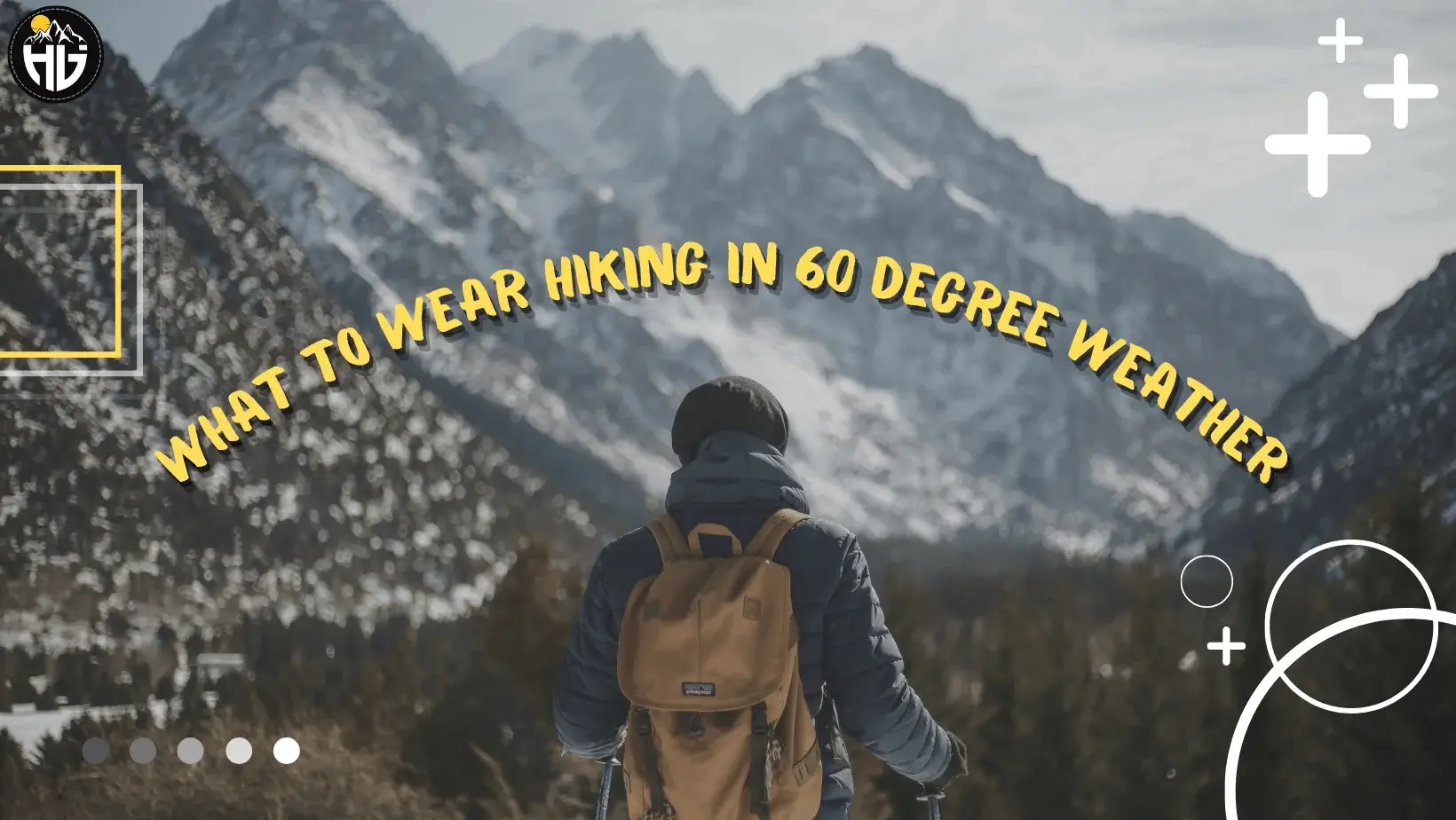How Long Should Hiking Pants Be?
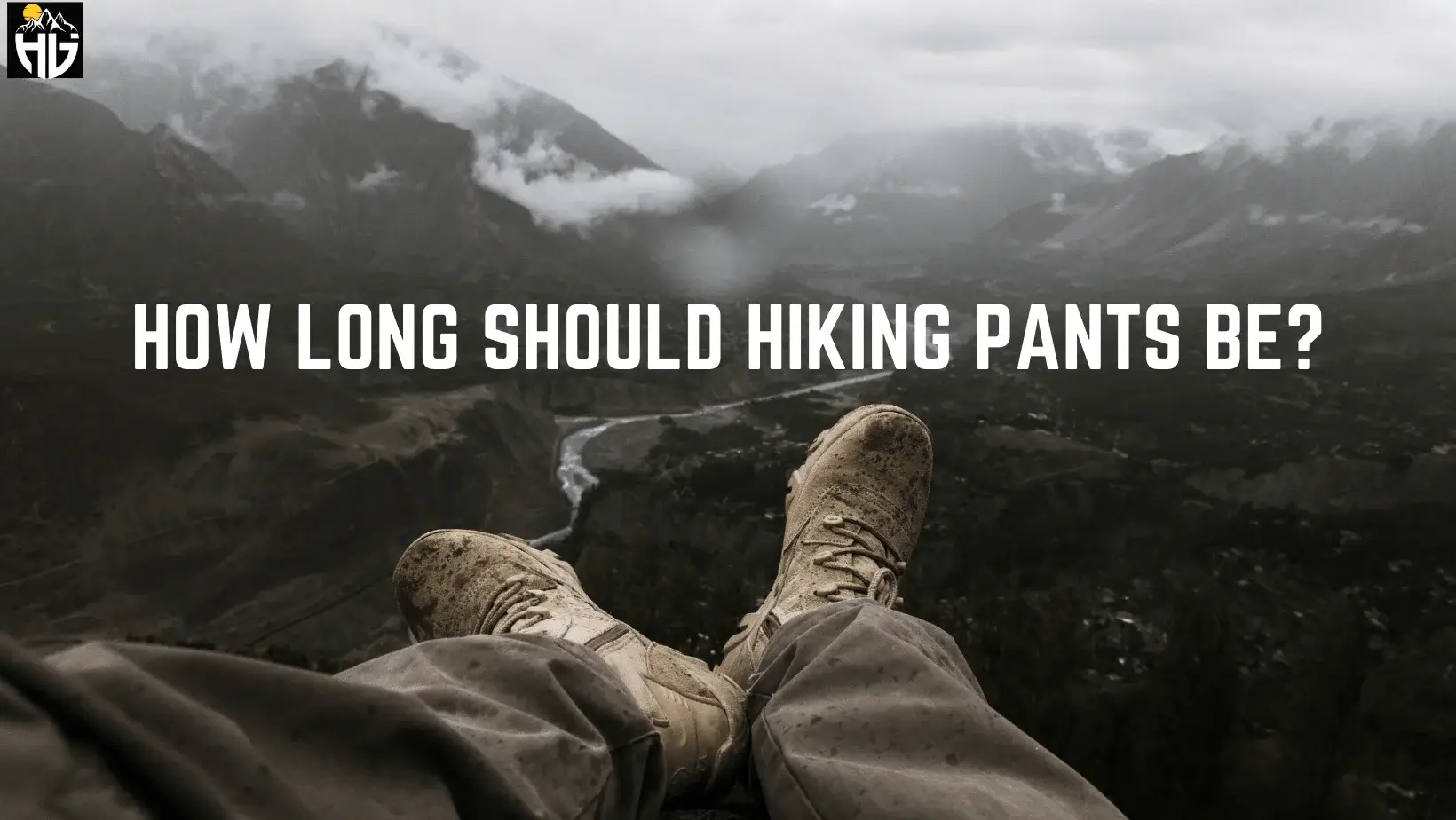
Hiking pants should be long enough typically reach the top of your hiking boots or trail shoes, covering your ankles. This hiking pants length ensures protection from insects, sun exposure, and minor scrapes, while also preventing the pants from dragging on the ground and getting dirty or damaged.
However, some hikers prefer slightly longer pants that can be rolled up or adjusted as needed, offering flexibility in various weather conditions. Ultimately, the ideal length can vary based on personal preference, the type of terrain you’ll encounter, and the weather.
It’s important to prioritize comfort, mobility, and protection when choosing if the hiking pants too long or short.
How Long Should Hiking Pants Be?
For a comfortable and secure hiking experience, selecting the proper length of hiking pants is essential. The ideal pant length can be affected by several variables, including the terrain, the weather, and the activity level. This section will provide general guidelines for determining the right hiking pant length. We’ll also offer advice on properly sized hiking pants by trying them on.
General Rules for Choosing the Right Pant Length for Hiking
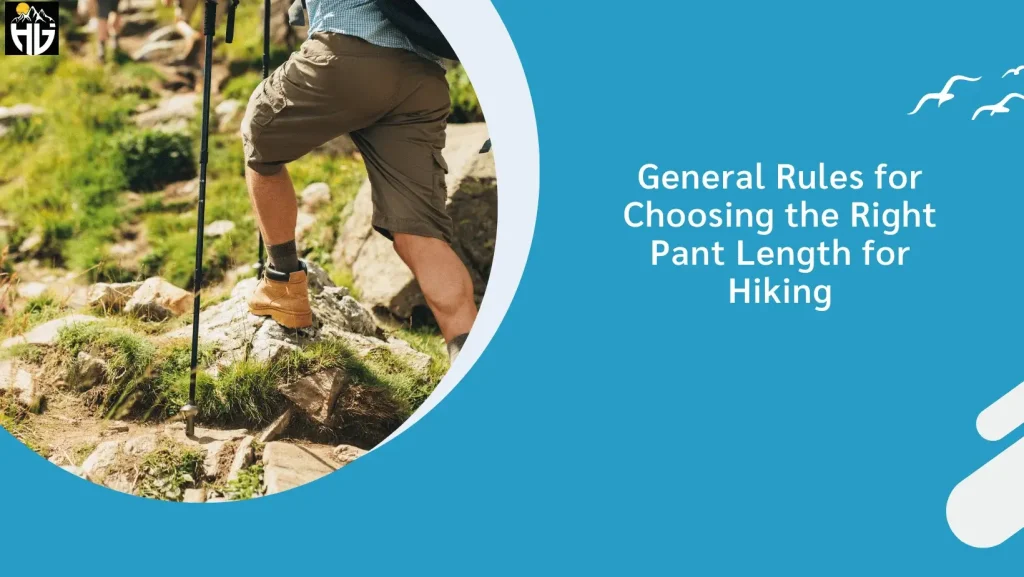
The inseam length and individual preferences play a large role in determining the ideal length of hiking pants men and women. Generally, these should end just above the ankle to provide the greatest range of motion and weather protection. While others prefer shorter, more breathable pants, an average hiker prefers longer hiking pants that cover their ankles for added protection.
Start by measuring your inseam length per the instructions in the previous section to determine the proper length of hiking pants. After that, consider your preferences and the elements, like terrain and climate, that might impact the ideal pant length.
What Determines the Optimal Pant Length?
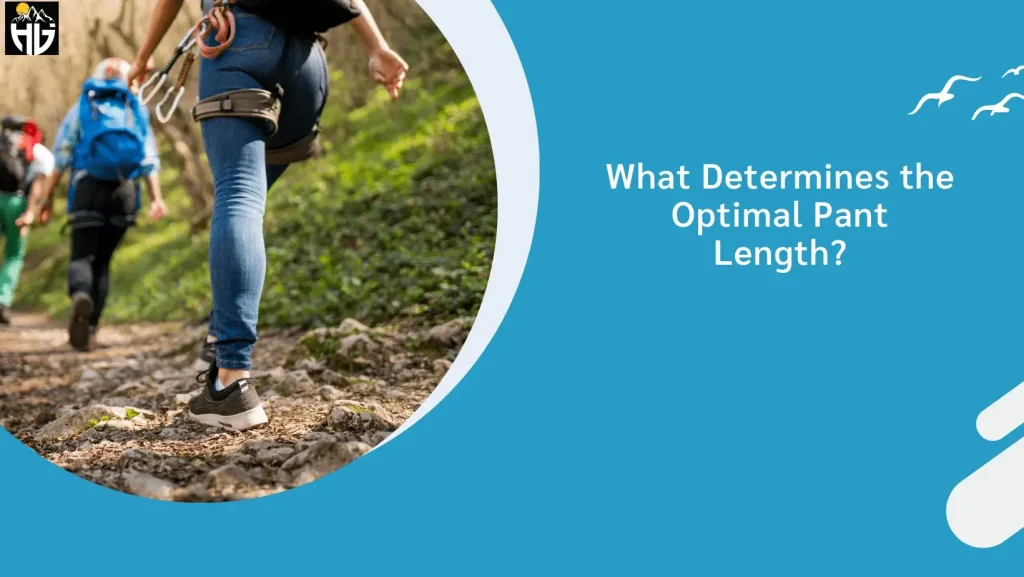
Depending on the terrain, the weather, and the intensity of the activity, different lengths of pants can be considered for hiking. For instance, longer ones that cover your ankles may offer better protection from cuts and scratches if you’re hiking through rugged terrain with many rocks and branches. Conversely, shorter pants material for hiking pants and and more ventilation may be more comfortable hiking in hot, humid weather.
Another crucial aspect to take into account when choosing the ideal pant length is activity level. Shorter pants that allow for more mobility may be more appropriate if your walk is more challenging and involves climbing or scrambling. Conversely, longer ones with more coverage may be more appropriate for a leisurely walk on flat ground.
Tips for Making Sure Hiking Pants Fit Correctly When Trying Them On
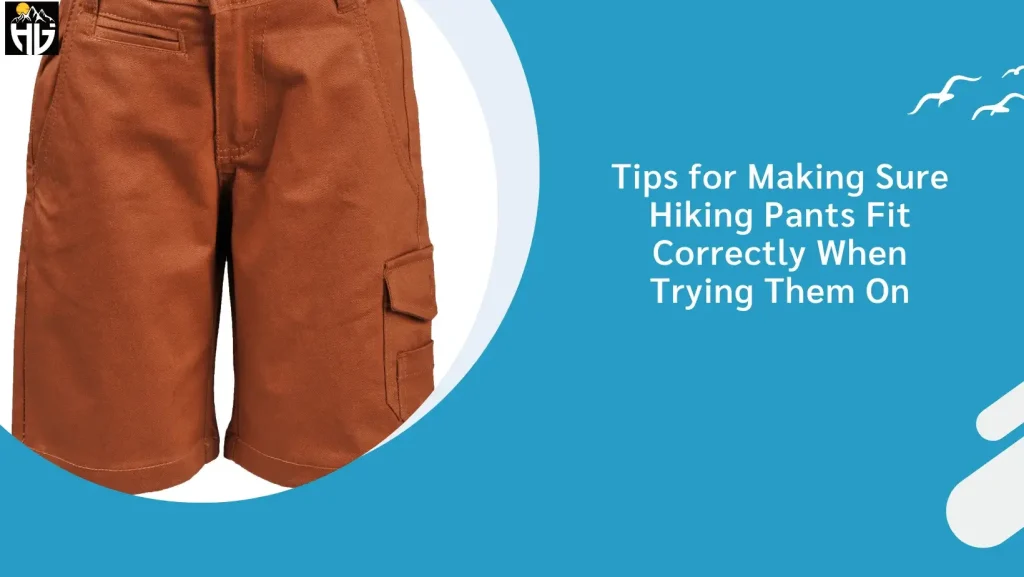
To ensure maximum comfort and protection, it’s critical to ensure proper fit when trying on hiking pants. Observe the following advice:
- Wear the hiking boots you’ll be hiking in to ensure that the trekking pants are the proper length.
- Check the fit in the waist, hips, and thighs to ensure a snug and comfortable fit.
- Ensure the pants don’t restrict your movement by taking a few steps and moving your legs.
- Verify the length and, if necessary, adjust it.
Hikers can choose hiking pant length that is good for their outdoor adventure by following general guidelines based on inseam measurements and personal preferences.
Considering elements like terrain, weather, and activity level, and trying on pants to ensure they fit properly. To ensure the best hiking experience possible, consider your needs and preferences when choosing hiking pants women and men.
Why Hiking Pants Length Matters?
Having the appropriate equipment is essential for a safe and enjoyable hiking experience. One of the most crucial pieces of clothing to consider is a pair of hiking pants, and selecting the proper length is crucial. This section will review the importance of hiking pant length and how it relates to your safety, comfort, and mobility.
Hazards of Wearing Pants That Are Too Long or Too Short
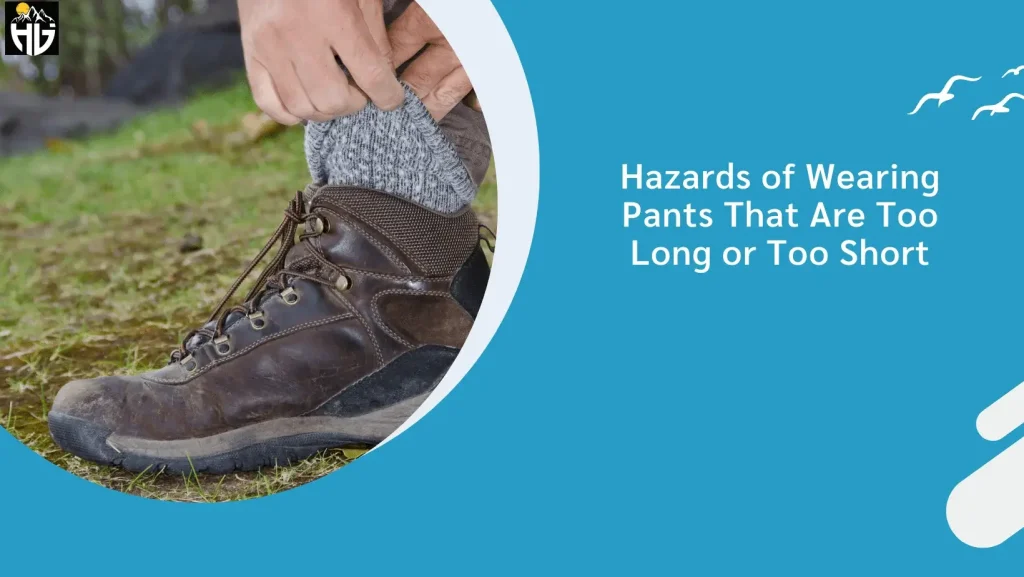
It can be dangerous to hike in pants that are too long or short. Too-long hiking pants can make your trip, especially if you walk on uneven ground. Sprains, cuts, and bruises are a few injuries that can result from tripping. Additionally, it can be risky to hike near cliffs or other difficult terrain because a fall could be fatal.
Too short hiking pants can leave your ankles vulnerable to sunburn, insect bites, and scratches. Additionally, wearing too-short pants while hiking in wet conditions like crossing streams or rivers can leave your feet cold and wet.
How Length Affects Mobility, Comfort, and Protection
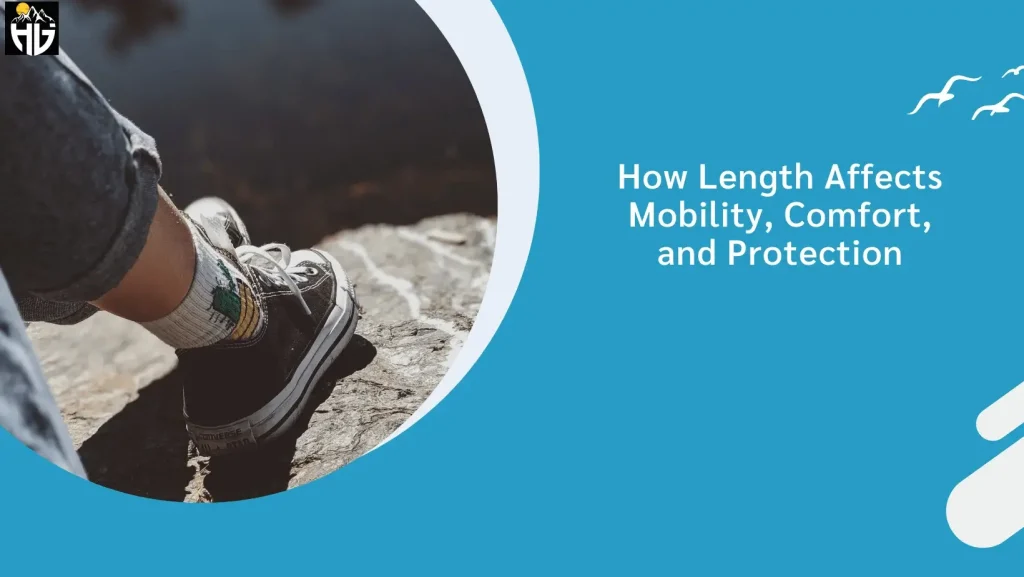
Your range of motion, comfort, and level of weather protection may all be impacted by the length of your hiking pants. Too-long pants can limit mobility and make climbing over rocks, logs, and other obstacles challenging. Your hike may become less enjoyable as a result of your increased pace.
Conversely, wearing too short pants can leave your skin vulnerable to sunburn or insect bites. Additionally, it can be uncomfortable if you’re hiking in chilly or wet weather. Your legs will be protected while allowing you to move freely if your pants are the proper length.
What to Wear hiking in a 60 Degree Weather?
Situations Where the Wrong Pant Length Could be Hazardous

The wrong hiking pant length can be dangerous in a variety of circumstances. For instance, Women’s hiking pants that are too long can catch on rocks or branches while hiking in steep terrain, resulting in losing your balance and falling. Similarly, wearing too-short pants when crossing water can leave your feet cold and wet.
When hiking in hot or cold weather, the wrong pant length can also be dangerous. In hot weather, wearing long pants can make you overheat; in cold weather, wearing short pants can make you hypothermic.
Examples of the Right Pant Length for Different Situations
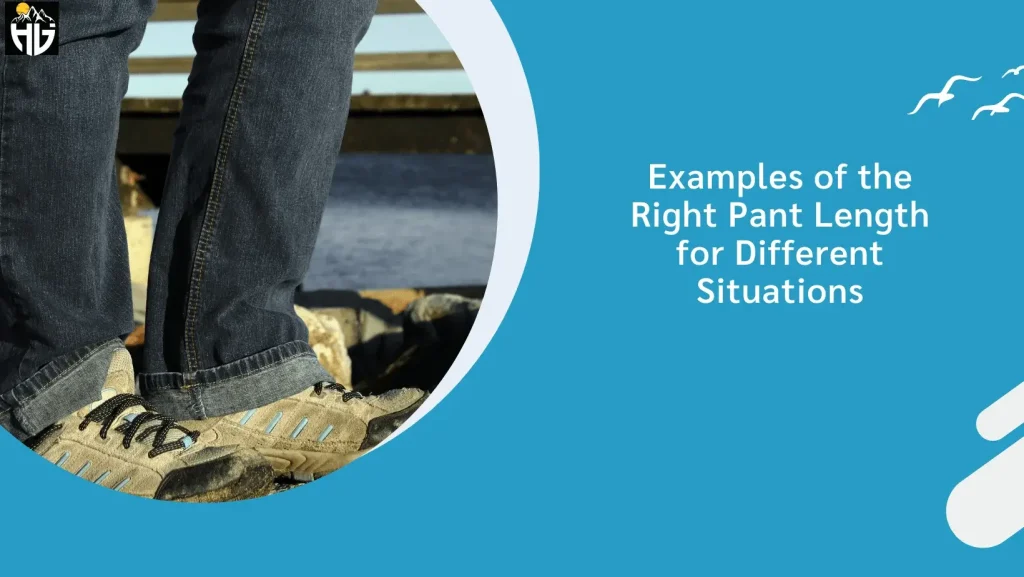
Depending on the circumstance, different lengths of pants are appropriate for hiking. For instance, hiking shorts might be the best choice if you’re going on a hot-weather hike. However, pants that cover your ankles can offer protection from scratches and insect bites if you’re hiking in rocky terrain. Leg-covering clothing is a necessity in cold climates if you want to stay warm.
Wearing waterproof or quick-drying pants is the best choice for hiking in wet conditions, such as when crossing streams or rivers. These pants will keep you dry and cozy even if you get wet.
To sum up, choosing the appropriate length of hiking pants is crucial for a secure and enjoyable hiking experience.
Wearing Hiking pants too long or short can be dangerous and impact your comfort, mobility, and weather protection. You can choose hiking pants’ length for your needs by considering the circumstances you’ll be hiking in and the weather you’ll encounter.
How to Measure Inseam Length for Hiking Pants?

Measuring your inseam length is essential when you are going to find hiking pants with ideal length. The length of your inseam, which measures how far your crotch extends down your leg, will differ depending on your body type and the pants you wear. We’ll give a detailed tutorial on how to measure inseam length in this section.
What is Inseam Length, and Why is it Important?
The inseam length measures how far your leg extends from your crotch. To ensure your pants fit properly and offer the protection and comfort you need for hiking, measure the length of your inseam. Your mobility, comfort, and weather protection may be compromised if your pants are too long or too short.
Step-by-Step Guide for Measuring Inseam Length
- Start by placing your feet shoulder-width apart while standing straight against a wall. Make sure you’re wearing the footwear you’ll be hiking in.
- Put a book or a piece of cardboard up against your crotch and between your legs. Ensure that the cardboard or book is parallel to the ground.
- Mark the point where the book or cardboard meets the wall with a pencil or marker while holding it firmly against your crotch.
- From the floor to the mark on the wall, measure the distance. Your inseam measures this long.
Tips for Measuring Inseam Length Alone or With a Partner
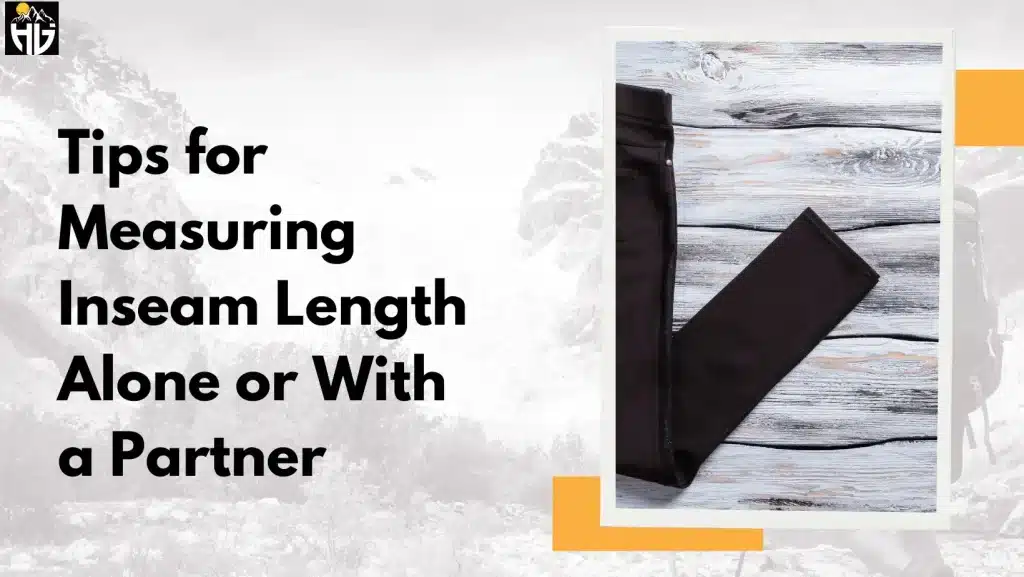
Even though measuring your inseam length alone can be difficult, it is possible with a few pointers. Make sure you stand straight against the wall, then mark where the wall meets your crotch with a book or piece of cardboard. You can also use a mirror to ensure the book or cardboard is level with the floor.
It might be simpler and more precise to measure with a partner. While you stand straight against the wall, ask your partner to hold the book or cardboard against your crotch. By doing so, you can be sure that the measurement is precise and that the book or piece of cardboard is parallel to the ground.
Top Picks for Hiking Pants in Different Lengths
With so many hiking pants available on the market, it can be challenging to choose hiking pants. This article will provide a comprehensive list of top-rated hiking pants in different lengths to help you find the right pair for your next adventure.
Columbia Silver Ridge Convertible Hiking Pant
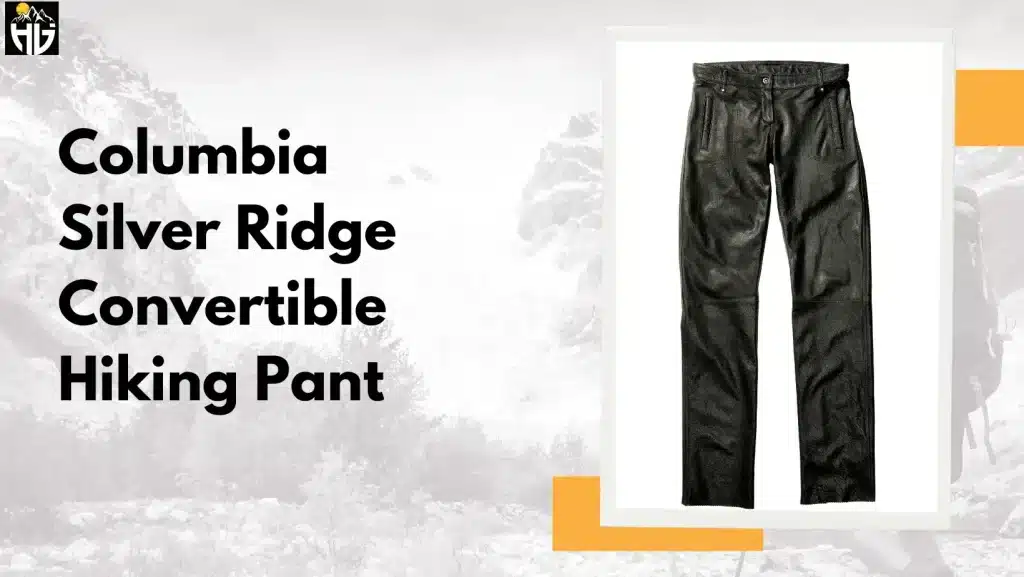
The Columbia Silver Ridge Convertible Pants are a great option for hikers looking for durability and versatility. These pants can be changed into shorts when the temperature rises and are made to be worn in any type of weather. They have Omni-Wick technology, which wicks moisture away from your skin to keep you dry and comfortable and are made of nylon and polyester.
Pros
- The trousers offer versatility for weather conditions by being easily transformed into shorts.
- Long hikes and other outdoor activities are appropriate because they are high quality hiking pants that can withstand wear and tear.
- The fabric’s Omni-Wick technology wicks away sweat and moisture to keep you dry and comfortable.
- The UPF 50 sun protection on the trousers shields you from dangerous UV rays.
- They have numerous cargo pockets, including a security pocket with a zip closure with plenty of room to store your hiking essentials.
Cons
- Trying them on before buying is crucial because some customers have complained that the sizing can vary.
- The trousers are more practical, so they might not be the most fashionable choice.
- Some users have complained that the trousers’ zippers can be challenging to operate or may catch on objects over time.
Prana Stretch Zion Pants
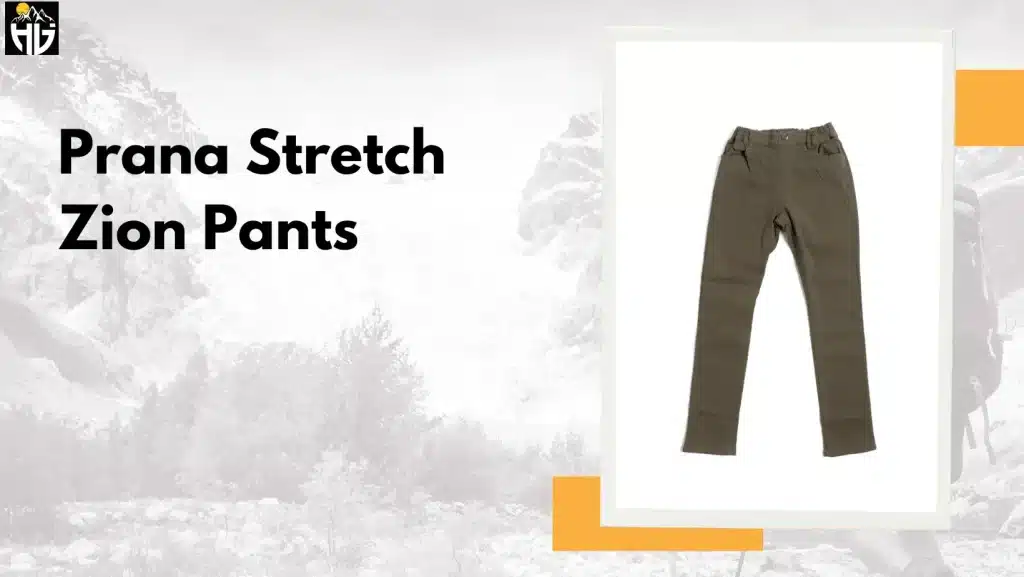
For hikers looking for comfortable, adaptable pants that can handle any terrain, the Prana Stretch Zion Pants are a great choice. The nylon hiking pants material used to create these trousers offers strength and flexibility. They are a fantastic option for wet hikes because the fabric is also water-resistant. The trousers’ relaxed fit and articulated knees offer maximum comfort and mobility.
Pros
- The stretchy fabric used to make the trousers is strong, making them suitable for outdoor activities and rough terrain.
- Thanks to the fabric’s water resistance, they are a fantastic option for hikes in wet or light rain.
- You can move around freely on your walk thanks to the comfortable, loose fit and the articulated knees.
- The pants have numerous pockets, including a hidden stash and a cargo pocket with a zipper, which give you plenty of room to store your essentials.
- The trousers’ chic and contemporary style makes them appropriate for daily wear and outdoor activities.
Cons
- The lack of breathability of the trousers might make them uncomfortable in warm weather.
- It’s important to try them on before buying because the sizing can vary.
- According to some users, the fabric may eventually be prone to pilling.
Arc’teryx Gamma LT Pant
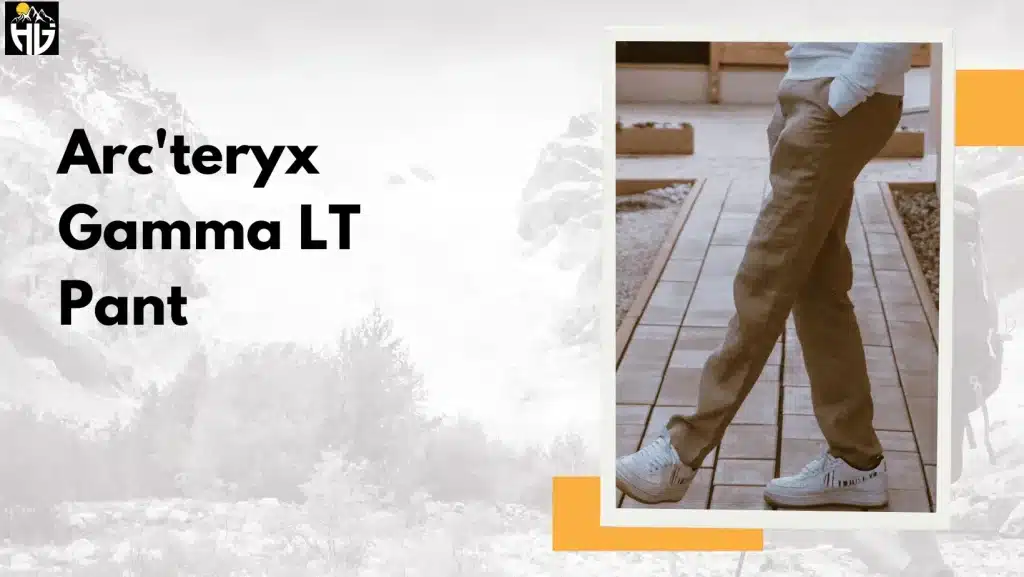
While hiking or climbing, the Arc’teryx Gamma LT trousers are made to be durable and comfortable. The Gamma LT trousers are made from a combination of materials, including stretchy nylon, and offer a great range of motion, making them appropriate for several outdoor activities. Additionally, the trousers have a water-repellent finish that keeps you dry in snow or light rain and dries quickly if they get wet.
Pros
- The trousers have excellent stretch thanks to their nylon and elastane blend construction, which makes them comfortable to wear during strenuous activities like hiking or climbing.
- The trousers have a long-lasting water-repellent finish that keeps you dry in snow or light rain.
- Due to their light weight and packability, the Gamma LT trousers are simple to store in a backpack.
- The pants’ gusseted crotch and articulated knees offer a wide range of motion, making them ideal for strenuous outdoor activities.
Cons
- The price of the Arc’teryx Gamma LT trousers makes them unaffordable for hikers on a tight budget.
- Although the trousers are water-resistant, they might not be appropriate for snowy or windy conditions.
- The trousers might not be appropriate for warmer weather because they can be heavy.
Fjallraven Keb Trousers

For serious hikers and outdoor enthusiasts who need tough, adaptable trousers that can withstand challenging terrain and shifting weather conditions, Fjallraven created the Keb Trousers. These trousers are ideal for long hikes, climbs and treks because they combine stretchy panels with durable G-1000 Eco fabric to provide excellent protection, comfort and mobility.
Pros
- Durable: The G-1000 Eco fabric is strong and can withstand rocky terrain and severe weather damage.
- Versatile: For climbing, hiking, and other outdoor activities, the stretchy panels on the knees, seat, and waist offer excellent mobility.
- Weather-resistant: The fabric has been treated with a water-resistant finish to keep you dry during light rain and drizzle, making it the perfect rain pants.
- Adjustable: An adjustable Velcro strap allows you to create a custom fit for the waistband.
- Breathable: During strenuous activities, the fabric wicks moisture away from your skin to keep you cool and comfortable.
Cons
- Expensive: Compared to some other hiking trousers on the market, the Fjallraven Keb Trousers are more expensive.
- Heavy: Although the G-1000 Eco fabric is strong, it also makes the trousers heavier, which may not be the best choice for ultralight backpacking trips.
- Limited Color Options: The Fjallraven Keb Trousers come in a small selection of colors, which might not be to everyone’s taste or fashion.
Eddie Bauer Guide Pro Pants
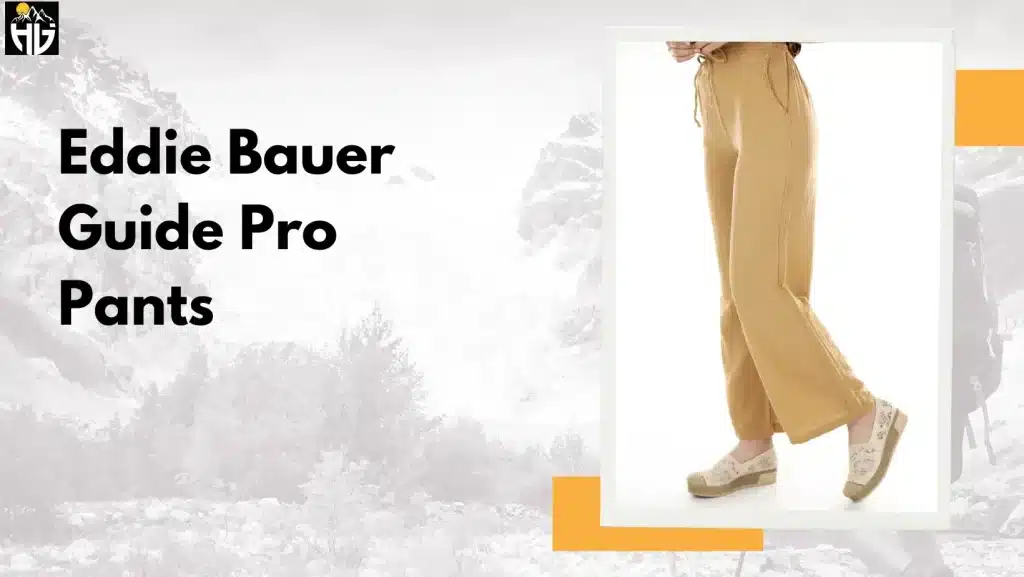
The Eddie Bauer Guide Pro Pants are a popular choice among hikers and outdoor enthusiasts. These pants are designed to provide comfort and durability on long treks while offering style and versatility for everyday wear.
Pros
- Durable material: Made with a blend of nylon and spandex, the Guide Pro pants are tough enough to withstand rugged terrain and frequent wear.
- Multiple pockets: With six pockets, including a zippered thigh pocket, these pants offer ample space to store small items like a phone, keys, and maps.
- Articulated knees: The Guide Pro pants feature articulated knees that allow for a greater range of motion, providing comfort and flexibility on steep terrain and rocky paths.
- Gusseted crotch: The pants have a gusseted crotch that enhances comfort and mobility, preventing chafing and allowing you to move freely.
- UPF sun protection: The pants provide UPF 50+ sun protection factor, shielding your skin from harmful UV rays.
Cons
- Limited color options: The Eddie Bauer Guide Pro Pants are available in only a few color options.
- Not suitable for extreme weather conditions: These pants are water-resistant but not fully waterproof, so they may not be the best choice as rain pants.
Mountain Hardwear AP Pants

Mountain Hardwear AP Pants are designed to withstand the toughest outdoor conditions while providing maximum comfort and flexibility. Made with a unique blend of cotton, nylon, and elastane, these pants are tough yet comfortable to wear. The Mountain Hardwear AP Pants are also versatile enough to be worn on the trails or in the city, making them a great option for outdoor enthusiasts and urban adventurers alike.
Pros
- Durable and rugged design: The Mountain Hardwear AP Pants are made with a blend of cotton, nylon, and elastane that make them strong and durable enough to withstand the toughest outdoor conditions.
- Comfortable to wear: Despite their tough construction, the pants are still comfortable to wear and provide plenty of flexibility and mobility.
- Versatile: These pants can be worn on the trails or in the city, making them a great option for those who want a versatile pant for different activities.
- Good pocket configuration: With multiple pockets, including a zippered thigh pocket, these pants offer ample storage for essential items.
- Stylish: The pants have a modern, streamlined design that looks great both on and off the trail.
Cons
- Limited color options: The Mountain Hardwear AP Pants are available in only a few colors, which may not suit everyone’s preferences.
- Not ideal for extreme weather conditions: While these are rain pants, they are not designed for extreme weather conditions and may not provide enough protection in such situations.
- Expensive: Compared to some other hiking pants on the market, the Mountain Hardwear AP Pants are relatively expensive, which may not be suitable for those on a tight budget.
Factors to Consider When Choosing The Best Hiking Pants
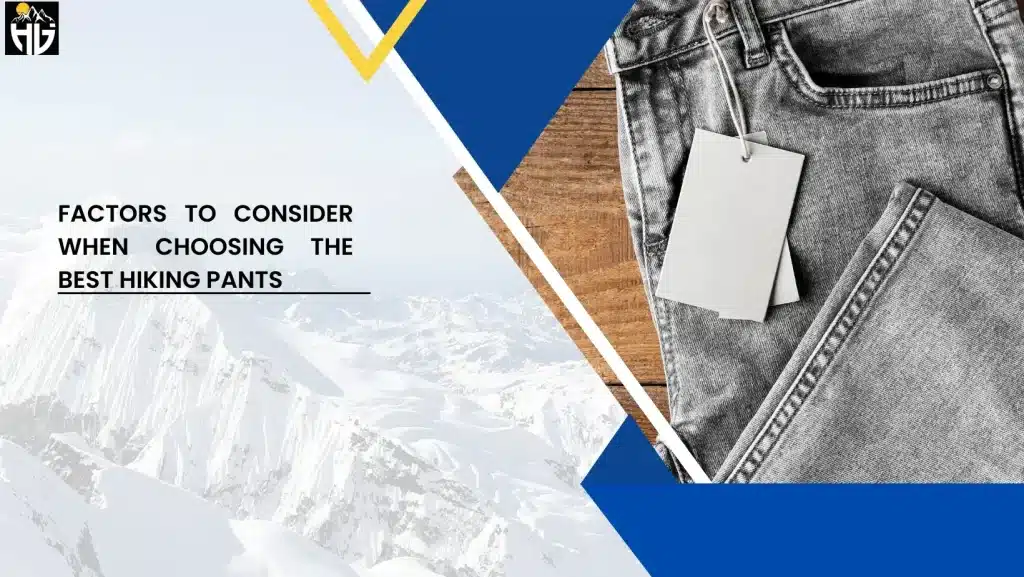
Your choice of hiking pants can significantly impact your hiking experience. This section will cover the various types of trousers that are offered, the features that may affect how well they function, and suggestions for choosing best hiking pants based on personal requirements and preferences.
Types of Hiking Pants and Their Purposes
The styles, materials, and weights of hiking pants vary, and each is created for a particular hiking environment and activity. These are a few examples of popular hiking pants:
Convertible Hiking Pants: The pant legs have a zip off so they can be changed into shorts. They offer versatility and are perfect for hiking in varying weather conditions.
Softshell Pants: These pants offer comfort and mobility because they are made of stretchy, breathable softshell fabric. They provide protection from wind and light rain, making them perfect for hiking in temperate weather.
Hardshell Hiking Pants: These pants are breathable, waterproof material shielding wearers from strong winds and precipitation. They are known as Standard hiking pants, as they are perfect for hiking in arid and inclement weather.
Insulated Hiking Pants: These clothes are made to keep you warm when it’s cold outside. Compared to other hiking pants styles, they are typically heavier and less breathable.
Features That Affect Pant Length and Functionality
It’s crucial to consider the features affecting pant’s functionality when selecting them. Typical characteristics include:
Zipper: Hiking Pants with zippers make switching between wearing shorts and pants simple and also provide ventilation.
Pockets: Small items like keys, phones, and maps can be conveniently stored in pockets.
Cuffs: While some pants have zippers that make it simple to slip them over boots, others have adjustable cuffs that can be cinched to keep out debris and insects.
Picking the Right Hiking Pants
There are a few considerations when choosing hiking pants to guarantee a secure fit. Here are a few suggestions:
Fit: Check that the pants’ waist, hips and thighs are all securely and comfortably enclosed. To ensure the right length, try them on with the hiking shoes you intend to use.
Style: Opt for a look that satisfies your unique requirements and preferences. Think about the kind of hiking you want to do and the climate you’ll be hiking in.
Material: Based on the weather and level of activity, choose hiking pants that offer the right amount of protection and comfort.
Budget: There is a wide range of prices for hiking pants, so pick a pair that fits your needs and budget.
Your comfort and functionality while choosing hiking pants can greatly impact your hiking. Hikers can choose hiking pants for their outdoor adventure by considering the various types of pants available and their intended uses, the features that can affect their functionality, and suggestions for selecting good hiking pants. To ensure the best hiking experience possible, keep factors like fit, style, material, and budget in mind.
Tips for Maintaining and Repairing Most Hiking Pants
A longer lifespan and continued functionality can be achieved with the help of appropriate maintenance and repairs. In this section, we’ll review some maintenance advice for your hiking pants and potential problems.
Caring for Hiking Pants
Hiking pants may gather dirt, sweat, and other debris during a hike. After each use, you must wash them to eliminate contaminants that might harm the fabric. To prevent the fabric from being harmed, adhere to the care instructions on the label.
Most hiking pants can be machine-washed using a mild detergent and a gentle cycle. Fabric softeners and bleach should not be used as they can weaken the fabric’s ability to resist water.
To avoid mold and mildew growth, it’s crucial to completely dry your hiking trousers after washing them. Use a dryer set to low heat or let them air dry. High heat settings should be avoided as they can harm the fabric.
Your hiking trousers must be stored properly to keep them in good condition. They should be kept from direct sunlight in a dry, cool location. Avoid compressing them when storing them because this can harm the fabric.
How to Fix Hiking Pants?
Due to their exposure to rough terrain and obstacles, hiking trousers can be vulnerable to rips and holes. Use an extra fabric patch or glue made especially for outdoor gear to patch up rips or holes. Before re-wearing the trousers, apply the glue to the tear or hole and let it completely dry.
With hiking pants, zip issues are quite common. Try lubricating the zipper teeth with beeswax or soap to unstick a stuck or broken zipper. The zip might need to be replaced if it’s still not functioning. Visit a reputable repair facility with your pants or inquire with the maker about repair options.
Your hiking trousers’ lifespan and usability can be increased by properly maintaining them. You can make the most of your outdoor equipment by following this maintenance and repair advice.
Conclusion
The right hiking pants perform a crucial factor for ensuring a safe and comfortable outdoor experience. We discussed the followings:
- Hazards of wearing pants that are too long or too short
- How to measure inseam length accurately
- How to choose hiking pants, and factors to consider
- Provided top picks for hiking pants in different lengths.
By taking the time to measure inseam length and consider factors like terrain, weather, and activity level, hikers can choose hiking pants that fit well, protect against the elements, and allow for optimal mobility.
For readers who want to learn more about hiking gear and safety, there are many additional resources available. The hiking and outdoor industry offers a variety of informative blogs, videos, and forums that can help hikers stay informed and prepared. Additionally, many national and state parks offer resources and education on safe hiking practices.
Finally, we encourage readers to share their own tips and experiences with hiking pants in the comments section below. By sharing knowledge and experiences, we can all learn from each other and enhance our hiking experiences.
Frequently Asked Questions
Should I Wear Long Hiking Pants, or Short Ones?
The answer to whether to wear long or short hiking pants ultimately depends on a variety of factors, including personal preference, terrain, and weather. Long hiking pants can offer more protection from the elements and potential hazards on the trail, such as thorns, ticks, and poison ivy. They can also provide warmth in cooler weather and prevent sunburn in sunny conditions.
On the other hand, short hiking pants can be more comfortable and offer greater mobility, particularly in hot temperatures. They can also be more breathable and prevent overheating.
Ultimately, the decision between long or short hiking pants should be based on individual needs and preferences, as well as the specific conditions of the hiking trail. It may be helpful to consider the terrain, weather, and activity level when deciding which type of pants to wear.
Can I Wear Jeans During a Day Hike?
While it’s not uncommon to see people hiking in jeans, it’s generally not recommended for a day hike. Jeans are made from cotton, which absorbs moisture and takes a long time to dry. This means that if you sweat or encounter any water on the trail, your jeans will become heavy, uncomfortable, and can lead to chafing and irritation. Additionally, jeans do not offer the same level of mobility and flexibility as hiking pants, which can make it more difficult to navigate tricky terrain or make large steps.
It’s important to wear appropriate hiking clothing when hiking to ensure your comfort, safety, and overall experience. Opt for hiking pants made from moisture-wicking and quick-drying fabrics, such as nylon or polyester. These materials will keep you dry, comfortable, and prevent any chafing or irritation. Additionally, hiking pants are specifically designed with features such as reinforced knees and abrasion-resistant fabric to withstand the wear and tear of hiking.
Overall, while jeans may be comfortable as everyday pants, they are not the best choice for a day hike. It’s important to invest in appropriate hiking gear to ensure your safety and comfort on the trail.
Should I Wear Tight Hiking Pants, or Lose Ones?
Tight hiking pants, such as leggings or compression pants, can offer a closer fit and more flexibility for activities like rock climbing or scrambling over rough terrain. They also tend to be more breathable and moisture-wicking, which can help prevent chafing and keep you cool during strenuous hikes. However, they may not provide as much insulation or protection from the elements as looser-fitting pants.
Loose hiking pants, on the other hand, offer more room for layering and can provide better protection from sun, wind, and insects. They also tend to be more durable and resistant to tears and snags. However, they may restrict movement during more technical hikes and may not work as light summer hiking pants.


